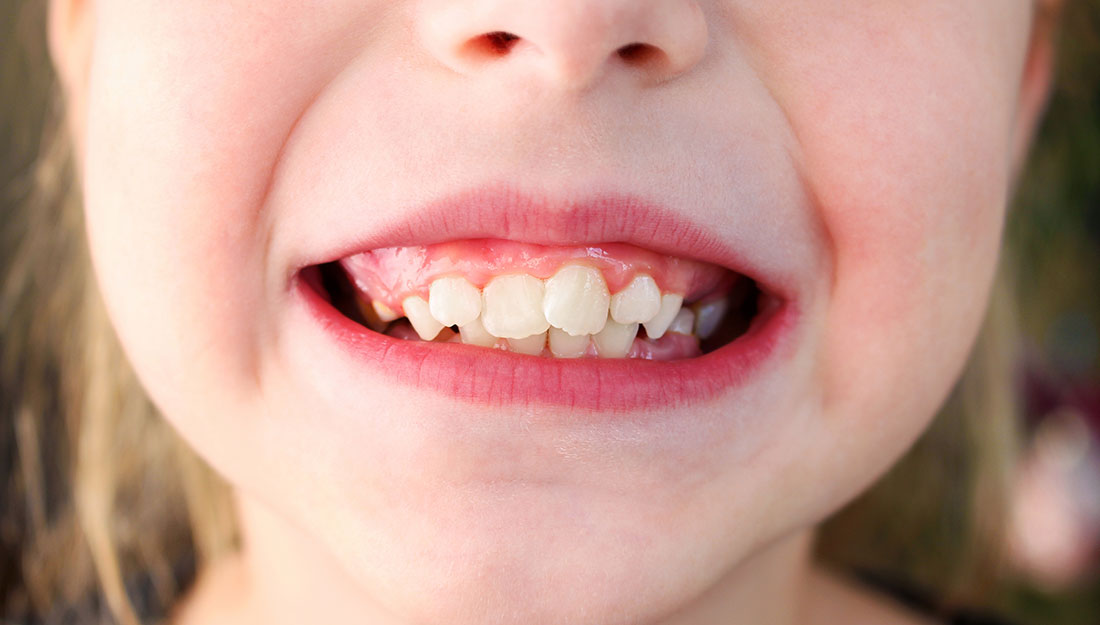You’re scrolling through your phone when you stop at your child’s latest school photo. That smile you love so much looks a little… different. Maybe there’s some crowding, or perhaps those front teeth seem more prominent than you remember. Your mind immediately jumps to the question every parent asks: “Is this normal, or should I be worried about braces?”
At Jarosz & Valente Orthodontics, serving families in Arlington Heights, Deerfield, and throughout the Chicagoland area, we hear this concern almost daily from parents just like you. The truth is, recognizing early orthodontic issues can make a tremendous difference in your child’s oral health journey. The American Association of Orthodontists recommends that children have their first orthodontic evaluation by age 7—but many parents don’t know what warning signs to look for before that visit.
This guide will help you identify five key indicators that your child might benefit from orthodontic treatment and explain exactly when to schedule that important first consultation with our experienced orthodontic team.
Why Early Orthodontic Detection Matters for Your Child’s Smile
You might wonder why orthodontists emphasize early screening when most children don’t get braces until their teenage years. The answer lies in the power of interceptive orthodontics—catching and addressing problems while your child’s jaw is still growing and developing.
Early orthodontic detection and treatment can prevent more serious issues from developing, often making later treatment shorter, less invasive, and less expensive. Some orthodontic problems are significantly easier to correct during childhood when facial bones are still malleable and responsive to treatment. However, it’s important to understand that an early orthodontic evaluation doesn’t necessarily mean immediate braces. In many cases, we’ll simply monitor your child’s development and intervene at the optimal time for the most effective treatment results.
Sign #1: Crowded or Overlapping Teeth
What it looks like: Teeth that twist, rotate, overlap, or seem to be competing for space in your child’s mouth. You might notice this especially with the front teeth or canines that appear pushed out of alignment.
Why it happens: Crowding typically occurs when the jaw is too small to accommodate all the adult teeth comfortably. It can also result from premature loss of baby teeth, genetics, or a combination of factors. At our Arlington Heights and Deerfield orthodontic offices, we see varying degrees of crowding daily.
Why it matters from an orthodontic perspective: Beyond aesthetics, crowded teeth create cleaning challenges that can lead to cavities and gum disease. Food particles and plaque easily become trapped in overlapping areas, and even the most diligent brushing can’t always reach these spots. Crowding can also cause uneven tooth wear, increase the risk of chipped or broken teeth, and contribute to bite problems that affect jaw function. As orthodontists, we’re trained to see how crowding today can lead to more complex orthodontic issues tomorrow.
What Arlington Heights and Deerfield parents should know: Crowding often becomes apparent around ages 6-8 when permanent teeth start erupting. It’s worth noting that some crowding during the “ugly duckling stage” (when adult front teeth first come in) is completely normal. These teeth often look too large for your child’s face initially, but the jaw typically catches up with growth. However, as orthodontic specialists, we can distinguish between normal developmental crowding and patterns that will require intervention. Persistent or severe crowding warrants professional orthodontic evaluation.
Sign #2: Gaps and Excessive Spacing
What it looks like: Large spaces between teeth, particularly noticeable between the two front teeth (called a diastema). While a small gap can be endearing in young children, excessive spacing throughout the mouth is worth monitoring by an orthodontist.
Why it happens: Spacing issues can occur when the jaw is too large for the size of the teeth, when teeth are missing (either congenitally or due to early loss), or as a result of oral habits like tongue thrusting or prolonged thumb sucking. Sometimes a prominent frenum (the tissue connecting the lip to the gums) can create spacing between front teeth.
Why it matters orthodontically: Significant gaps can affect speech development and eating efficiency. Food can become trapped between widely spaced teeth, potentially leading to gum irritation and periodontal issues. From an orthodontic standpoint, excessive spacing can also indicate underlying skeletal discrepancies that may require comprehensive treatment. Many children also become self-conscious about gaps as they get older, especially during the socially sensitive middle school years.
When to be concerned: It’s important to distinguish between normal gaps during tooth transition and concerning spacing that requires orthodontic intervention. Small gaps between baby teeth are actually beneficial—they provide room for larger permanent teeth. However, large gaps that persist after permanent teeth have erupted, or gaps that worsen over time, may indicate a need for orthodontic treatment. Our orthodontic team at Jarosz & Valente can assess whether your child’s spacing is developmental or requires treatment, and we can determine if the frenum needs to be addressed before or during orthodontic care.
Sign #3: Bite Problems (Overbite, Underbite, Crossbite)
As orthodontists, we focus extensively on bite alignment because these issues are among the most important orthodontic problems to catch early. Malocclusions (improper bites) can affect jaw development, facial structure, and long-term oral health if left untreated.
Overbite (Deep Bite): This occurs when upper teeth extend too far over lower teeth, sometimes completely covering them. A severe overbite can cause excessive wear on lower teeth, jaw pain, TMJ disorders, and even trauma to the gum tissue behind the upper front teeth or the roof of the mouth. While a slight overbite (2-3mm) is normal and healthy, excessive overlap requires orthodontic attention. We see many patients at our Arlington Heights and Deerfield locations who benefit greatly from early overbite correction.
Underbite (Class III Malocclusion): With an underbite, the lower teeth protrude past the upper teeth when biting down. This condition is often genetic and skeletal in nature, meaning it involves the position of the jaw bones themselves, not just the teeth. Underbites can significantly affect eating efficiency, speech development, and facial aesthetics. As orthodontists, we know that underbites are one of the few orthodontic issues that often require earlier intervention—sometimes as young as 7 or 8 years old—because treatment becomes significantly more complex once jaw growth is complete. Early treatment with appliances like reverse-pull headgear or facemasks can guide jaw growth and potentially avoid the need for jaw surgery later.
Crossbite: A crossbite occurs when upper teeth fit inside the lower teeth when biting together. This can happen on one side (unilateral) or both sides (bilateral) of the mouth, and it can affect front teeth (anterior crossbite) or back teeth (posterior crossbite). Crossbites are particularly concerning from an orthodontic standpoint because they can cause uneven jaw growth, facial asymmetry, and abnormal wear patterns if not addressed during childhood. Posterior crossbites often respond beautifully to palatal expansion during the growing years—a treatment that becomes more difficult or impossible once the palate fuses in adolescence.
It’s crucial to understand that bite problems affect more than just teeth alignment—they impact jaw function, facial development, and overall oral health. These issues don’t self-correct and typically worsen over time, making early orthodontic evaluation essential. This is precisely why the American Association of Orthodontists, of which Jarosz & Valente Orthodontics are proud members, recommends evaluation by age 7.
Sign #4: Difficulty Chewing or Biting
What to watch for: Does your child consistently chew on one side of their mouth? Do they avoid certain foods like apples, carrots, or crusty bread? Have they complained of jaw discomfort, pain when eating, or frequent headaches?
Why it happens from an orthodontic perspective: Misaligned teeth and improper bite relationships create an inefficient chewing pattern. When teeth don’t fit together properly (what orthodontists call “poor occlusion”), your child’s jaw muscles must work harder to accomplish basic eating tasks. This can lead to muscle fatigue, temporomandibular joint (TMJ) stress, and compensatory chewing patterns that can cause additional problems over time.
Why it matters: Beyond the immediate discomfort, difficulty chewing can lead to digestive issues (since digestion begins with proper chewing), TMJ disorders, chronic headaches, and uneven tooth wear. Children may also begin avoiding nutritious foods that require more chewing effort, potentially impacting their overall nutrition and health. As orthodontists, we understand that proper occlusion is essential not just for aesthetics, but for optimal oral function throughout life.
Parent tip: Pay special attention during family meals. If your child consistently struggles with crunchy vegetables, tough meats, or other foods that require significant chewing, it’s worth scheduling an orthodontic consultation at either our Arlington Heights or Deerfield office. These seemingly small issues can indicate more significant orthodontic problems that will benefit from early intervention.
Sign #5: Mouth Breathing or Speech Issues
What to notice: Does your child habitually breathe through their mouth instead of their nose, even when not congested? Do they snore regularly or have persistent speech difficulties despite being at an age where pronunciation should be clear?
The orthodontic connection: Many parents don’t realize that orthodontic issues can significantly affect breathing and speech. A narrow maxilla (upper jaw), high palatal vault, or improper jaw positioning can obstruct airways, forcing children to breathe through their mouths. This is an area where orthodontics intersects with overall health. Similarly, the position of teeth and jaw alignment significantly influences tongue placement and movement, which are crucial for proper speech development and articulation.
Why it matters: Chronic mouth breathing can lead to sleep disturbances, including obstructive sleep apnea, which affects concentration, behavior, academic performance, and overall development. From an orthodontic perspective, mouth breathing also changes facial growth patterns—often leading to a longer, narrower face, a recessed lower jaw, and dental crowding. Speech issues can impact your child’s confidence, social interactions, and academic success. Additionally, mouth breathing often leads to dry mouth, increasing the risk of cavities and gum disease.
Important note: Addressing these issues may require collaboration between your orthodontist, pediatric dentist, and possibly an ENT specialist or myofunctional therapist. At Jarosz & Valente Orthodontics in Arlington Heights and Deerfield, we work closely with other specialists to ensure comprehensive, interdisciplinary care for your child. Orthodontic appliances like palatal expanders can widen the upper jaw, increasing nasal airway space and often dramatically improving breathing. We may also recommend myofunctional therapy to help retrain oral and facial muscles for proper tongue posture and nasal breathing patterns.
When to Schedule That First Orthodontic Visit
The magic age: 7 years old. The American Association of Orthodontists recommends that all children have an orthodontic evaluation by age 7, and as board-certified orthodontists, we strongly support this recommendation. By this age, children typically have a mix of baby teeth and permanent teeth, allowing us as orthodontic specialists to accurately assess how teeth are erupting, how jaws are developing, and how the bite is forming. This early evaluation helps identify problems that are most effectively treated during childhood when we can guide growth and development.
It’s crucial to understand that an orthodontic evaluation at age 7 doesn’t mean your child will need braces immediately. In fact, most children won’t require treatment right away. Instead, this early visit establishes a baseline and allows us to monitor development with our expert orthodontic perspective, intervening only when the timing is optimal for your child’s specific needs. This is called “interceptive orthodontics” or “Phase 1 treatment” when early intervention is beneficial, but many children will simply be monitored until all permanent teeth have erupted and they’re ready for comprehensive orthodontic treatment in their early teens.
Earlier orthodontic visits are warranted if you notice:
- Severe crowding or difficulty erupting teeth
- Crossbite (especially posterior crossbite) or significant underbite
- Extreme difficulty chewing or biting
- Mouth breathing, snoring, or sleep disturbances
- Protruding front teeth that are at risk for injury
- Early or late loss of baby teeth
- Jaw shifting or clicking when opening or closing
- Injury to teeth or jaw
What happens at the first orthodontic visit? At Jarosz & Valente Orthodontics, we make orthodontic evaluations comfortable, educational, and pressure-free. Dr. Jarosz and Dr. Valente personally evaluate every patient. The visit typically includes a comprehensive clinical examination of your child’s teeth, bite, jaw relationship, and facial structure. We may take diagnostic records including digital X-rays, photographs, and sometimes digital scans to see what’s happening beneath the gums and to analyze the skeletal and dental relationships in detail.
We’ll discuss your child’s growth patterns, any oral habits that might affect dental development (like thumb sucking or tongue thrusting), and provide a clear explanation of our findings. If treatment is recommended, we’ll explain why, what type of treatment would be beneficial, and the optimal timing. If treatment isn’t needed immediately, we’ll establish a complimentary observation schedule so we can monitor your child’s development and ensure we intervene at exactly the right time.
There’s absolutely no pressure for immediate treatment if it’s not needed. As experienced orthodontists serving Arlington Heights, Deerfield, and surrounding communities, our goal is to educate you about your child’s orthodontic development and ensure you have all the information needed to make confident decisions about their care. We’re invested in building long-term relationships with our patients and their families.
Trust Your Instincts as a Parent—And Trust Orthodontic Specialists
Early orthodontic evaluation empowers you with knowledge about your child’s dental future. Not every sign mentioned in this article means your child will definitely need braces, and many minor issues resolve naturally as children grow. However, some problems benefit tremendously from early orthodontic intervention, and only a trained orthodontist can make that determination.
Remember, orthodontists are dental specialists who complete 2-3 additional years of intensive training beyond dental school, focusing exclusively on the alignment of teeth, the development of jaws, and the correction of bite problems. At Jarosz & Valente Orthodontics, our doctors have the specialized expertise to not only identify current problems but to predict future development and plan treatment that achieves optimal results efficiently.
Modern orthodontics offers more options than ever before, from traditional metal braces to clear ceramic braces, self-ligating systems, and clear aligners designed specifically for children and teens. Treatment plans are personalized based on each patient’s unique needs, and when issues are caught early, outcomes are typicall




